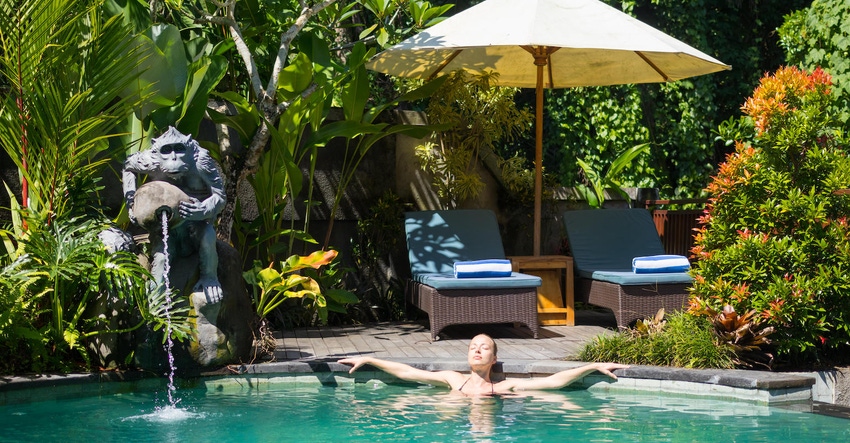4 Pool and Spa Design Trends That Will Define 2023
Beyond colors and textures, customers want more personalization and emotional connection with their backyards. Here’s how to dial in designs with those key demands in mind.
November 8, 2022

As pool and spa builders look to 2023, now is a good time to consider what design trends will dominate in the new year—and how to deliver them.
“You want to stay on top of the business and deliver forward-looking creative projects that you and your client will be proud of,” said Feras Irikat, GENESIS faculty advisor and creative director for Lunada Bay Tile. “Understanding trends tells us about the market and the client and how they’re changing and evolving.”
Post pandemic, that evolution is even more pronounced, Irikat said. And it’s not just about hardscapes and softscapes. Here are four key trends every builder needs to know in 2023 and how to translate them to their customers:
Embracing personalization. The home has become a more intimate space. Irikat said this trend isn’t about a material or color, but rather about the customer’s personality and taste, which makes it more difficult to assess but more powerful when done well.
“Customers are going to ask for this. They want something special and unique to them,” he said. “It’s not about checking a specific design box, but rather creating a feeling or mindset, so you want to make sure it speaks to them directly.”
For example, one of Irikat’s customers asked for tile to be made the same color as the quilt their grandmother gave them that held special meaning. “Finding these moments and emotional connections are more important than ever,” he said.
Embracing a healing environment. More than ever, people want their homes to embody the emotional and physical well-being they often sought outside of the home. Design-wise, creating a healing environment means using colors and materials that create a sense of calm, Irikat said.
Additionally, rather than the hard lines of more modern design, wellness environments embrace hardscapes with rounded corners and objects such as smooth river rock.
“Sanctuary is part of the mindset when you’re creating an emotionally healing environment,” he said. “Ultimately, you’re creating a refuge for them to physically, emotionally and mentally connect and heal.”
Maximizing square footage. After the claustrophobia of being locked down, homeowners want to make their homes and backyards feel as expansive as possible—especially when the overall footprint is small, Irikat said.
Developing that expansive feeling means taking indoor elements and design cues and pulling them into the outdoor environment to create the feeling and illusion that the two are linked.
The creative director said outdoor kitchens are a good example of an indoor element that’s being pulled outside to create a more expansive design. He also said creating separate outdoor areas or rooms, such as raised lounge spaces or sunken fire pits, is key.
“While the pool is still the center of the design, the areas around the pool have become just as important,” he said. “We’re going to see these outdoor designs get bigger and bigger and wilder with things like organic gardens and play areas.”
Creating a “soft” home. This design trend dovetails with some other trends such as creating a healing environment but focuses on colors and materials. “Soft homes” mimic the look and feel of high-end resorts and retreats. “The idea of the soft home is that everything has a silk and satin look and feel,” Irikat said.
On the color end, he said soft home design takes earth tones such as burnt umber and adds white to soften the color into more of a muted pastel.
On the materials side, he said stone and ceramic glass are often used. But in keeping with the soft aesthetic, hard edges should be avoided in favor of rounded, curved materials and hardscapes.
“The softer the environment, the more relaxing it is,” he said.
Irikat said the skill that ties all design trends together is the importance of pool and spa pros understanding customers’ emotions and desires.
“As brilliant as we are at building pools and spas, as designers we cannot forget to factor in the emotional side of our client. Really dive into their psyche and have conversations with them that tell you what’s important to them and how you can personalize the space,” he said. “It will create a really strong project that will be embraced by customers.”
About the Author(s)
You May Also Like




